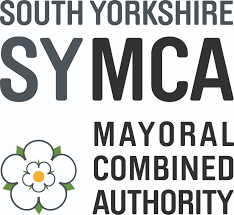The Power of Hoshin Kanri
What is Hoshin Kanri?
Hoshin Kanri, also known as policy deployment, is a strategic planning method that aligns a company's big-picture goals with daily operations. Originally developed in post-war Japan, this methodology ensures that everyone in an organisation—from top executives to front-line employees—is working towards the same objectives.
By using Hoshin Planning, businesses can avoid the common pitfalls of misaligned priorities, unclear objectives, and wasted efforts. Instead, they can focus on what truly matters and create a culture of continuous improvement.
How Hoshin Kanri Works
Hoshin Kanri is all about breaking down big goals into actionable steps. The process typically follows these steps:

Step 1 - Define Your Vision and Strategic Goals
Start with a clear mission, vision, and key business objectives. Think long-term (3-5 years) and decide what your company needs to achieve to stay competitive.
Step 2 - Identify Breakthrough Objectives
These are the major changes that must happen to achieve your vision. These breakthrough goals should be challenging but realistic, ensuring that they drive meaningful progress.
Step 3 - Set Annual Objectives
Break the long-term strategy into smaller, more manageable annual objectives. These should be clear, measurable, and achievable within 12 months.
Step 4 - Deploy Objectives Using Catchball
The catchball process ensures a two-way flow of communication, where managers and employees refine objectives together. This approach aligns teams and encourages collaboration.
Step 5 - Implement and Execute
Once everyone is aligned, the real work begins. Assign specific projects and initiatives to teams, ensuring that each department understands how their work contributes to the company's broader goals.
Step 6 - Monitor and Adjust Using the X-Matrix
The Hoshin Kanri X-Matrix is a powerful tool used to track objectives, strategies, tactics, and results. It provides a visual roadmap to ensure that all levels of the organisation remain on track.
Step 7 - Reflect and Improve
At the end of each planning cycle, conduct a review. Identify what worked, what didn’t, and how you can improve next time. This PDCA cycle (Plan-Do-Check-Act) helps create a culture of continuous improvement.
FAQs About Policy Deployment & X-Matrix
What is policy deployment in Hoshin Kanri?
Policy deployment is the process of translating high-level strategic goals into specific, actionable plans for different departments and teams. It ensures that everyone in the company is working towards the same objectives.
How does the Hoshin Kanri X-Matrix work?
The X-Matrix is a tool that visually maps out strategic goals, annual objectives, key initiatives, and performance measures. It helps organisations ensure alignment and accountability at all levels.
What are the main challenges of Hoshin Kanri?
Some of the biggest challenges include resistance to change, poor communication, and a lack of commitment from leadership.
Overcoming these challenges requires strong leadership, training, and a commitment to continuous improvement.
Is Hoshin Kanri only for large businesses?
No! Hoshin Kanri works for businesses of all sizes. Whether you're a small startup or a global corporation, the principles of strategic alignment, continuous improvement, and policy deployment can help your organisation thrive.
The Benefits of Hoshin Kanri
Company-Wide Alignment
One of the biggest advantages of Hoshin Planning is that it ensures everyone in the organisation is moving in the same direction. No more miscommunication, conflicting priorities, or wasted effort.
Increased Accountability
With clear goals, responsibilities, and tracking mechanisms, employees understand how their work contributes to the bigger picture. This sense of ownership drives engagement and performance.
Focus on What Matters Most
Instead of trying to tackle everything at once, Hoshin Kanri prioritises key objectives. This prevents distraction and ensures that resources are used effectively.
Continuous Improvement Culture
Hoshin Kanri is not a one-time initiative. It’s an ongoing process that encourages businesses to constantly learn, adapt, and improve.
Final Thoughts
Hoshin Kanri is a game-changer for businesses that want to move from chaotic, unfocused efforts to a structured, goal-driven approach. By using policy deployment, the X-Matrix, and the catchball process, companies can achieve better alignment, greater accountability, and continuous improvement.
At VA Innovation, we help businesses implement Lean Six Sigma strategies, including Hoshin Kanri, to drive efficiency and growth. If you're ready to take your strategic planning to the next level, get in touch with us today!
Top Lean Six Sigma Reads:









